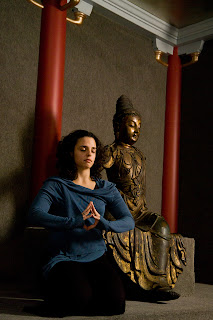Learning to draw our mind to focus is a powerful tool both on and off the mat. But just like every other part of yoga, meditation, is a practice and imperfection is inherently implied. When we have spent years multitasking and treating life like it is a sprint, is it really any wonder that focusing is a challenge?
I know when I first started meditating I thought it meant emptying. Achieving a space of no thought, no awareness – a completely altered state of being. But as humans we are thinking machines, many of you like me have monkey minds that are constantly whirring; no matter how much I tried to just “let go” thought was somehow always there. Over years of practice and many good teachers I finally accepted that meditation is not the absence of thought. Meditation is focused thought without attachment.
Very nice right, but now: “what on earth does that mean?”
Simply put, meditation is an exercise in focus where what you are focusing on is arbitrary. That is why the breath is such a powerful meditative tool – it is completely unconscious yet it can be made into a conscious act. When the breath is used, you can focus on it but if you stop focusing nothing will happen. It will continue to roll. You will continue to live and all will be well. It then becomes your responsibility to remember that it is the nature of the mind to wander. It is the practice to draw it back to your breath.
I think it is also important to realize that meditation, while it has deep spiritual components, is a brain wave and a natural state of being. Every one of us moves in and out of the meditative mind numerous times a day – we just don’t identify those moments as meditation. The Alpha and Theta brain waves while not entirely understood (as much of our brain is not) have been mapped again and again when subjects were studied in meditation. These two brainwaves precede those of the sleep cycle, you move through them to go to sleep and back through them to wake up. You can meditate – in all reality you have meditated everyday for your entire life.
Next time you want to try the practice of Meditation, set an alarm clock for three minutes. Stay focused that entire time noticing the wave of the breath moving in and the wave of the breath moving out. Remember if the mind wanders – be gentle with yourself – and draw it back to the breath.


